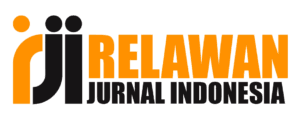Penggunaan Darah sebagai Biomarker Paparan Logam Cadmium Masyarakat Pesisir Sungai Musi (Efek terhadap Eritrosit dan Leukosit)
DOI:
https://doi.org/10.31851/sainmatika.v18i2.6967Keywords:
Heavy metals, Cadmium, Erythrocytes, LeukocytesAbstract
The content of heavy metals of cadmium and lead in the blood of people used Musi River water for daily needs has a higher potential for contamination than live in urban areas. This study was to analyze the levels of cadmium in the blood as a biomarker of metal pollution and to see its effect on the number of erythrocytes and leukocytes. Research that is analytic observational. The population in this study were the mothers of 7 Ulu Kampung Kapitan Laut RT 52, Seberang Hulu 1 District, Palembang City. Sampling was done by purposive sampling method. Sample examination was carried out at the Palembang Health Laboratory Center. The results showed that there were 3 samples that contained heavy metals in their blood with levels varying between 0.3 to 1.1 mg/L. The level of cadmium in the blood is still relatively safe for humans, but the presence of the metal has a chronic effect on human health when used for daily activities continuously. Cadmium affects blood components, namely erythrocytes and leukocytes in the body because heavy metals can increase protoporphirin in red blood cells (erythrocytes) which causes a decrease in the number of red blood cells and triggers anemia. Heavy metals also trigger changes in the structure and number of leukocytes, especially monocytes.
References
Amallia, RA., Wijaya, K.S., Dhani, A.B. (2020). Analysis Of Lead Level In Fish As a Water Bioindicator. Sainmatika: Jurnal Ilmiah Matematika dan Ilmu Pengetahuan Alam. Volume 17 Nomor 2, Desember 2020. DOI 10.31851/sainmatika.v17i2.5053
Andjelkovic, M., Buha Djordjevic, A., Antonijevic, E., Antonijevic, B., Stanic, M., Kotur-Stevuljevic, J., Spasojevic-Kalimanovska, V., Jovanovic, M., Boricic, N., Wallace, D., & Bulat, Z. (2019). Toxic Effect of Acute Cadmium and Lead Exposure in Rat Blood, Liver, and Kidney. International journal of environmental research and public health, 16(2), 274. https://doi.org/10.3390/ijerph16020274
Awadalla, A., Mortada, W. I., Abol-Enein, H., & Shokeir, A. A. (2020). Correlation between blood levels of cadmium and lead and the expression of microRNA-21 in Egyptian bladder cancer patients. Heliyon, 6(12), e05642. https://doi.org/10.1016/j.heliyon.2020.e05642
Bassil, M., Daou, F., Hassan, H., Yamani, O., Kharma, J. A., Attieh, Z., & Elaridi, J. (2018). Lead, cadmium and arsenic in human milk and their socio-demographic and lifestyle determinants in Lebanon. Chemosphere, 191, 911–921. https://doi.org/10.1016/j.chemosphere.2017.10.111








